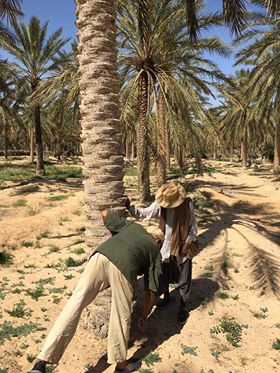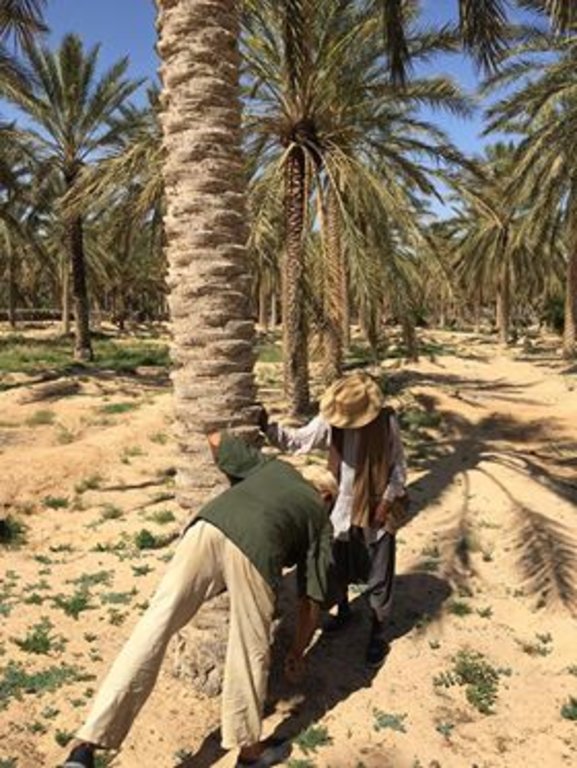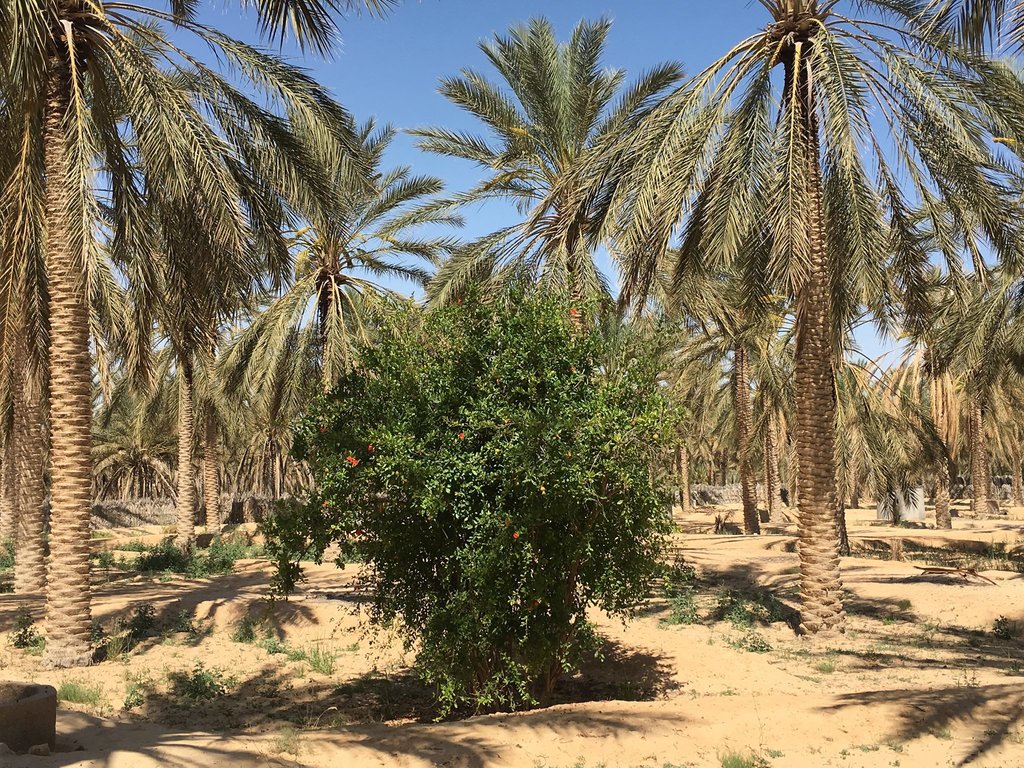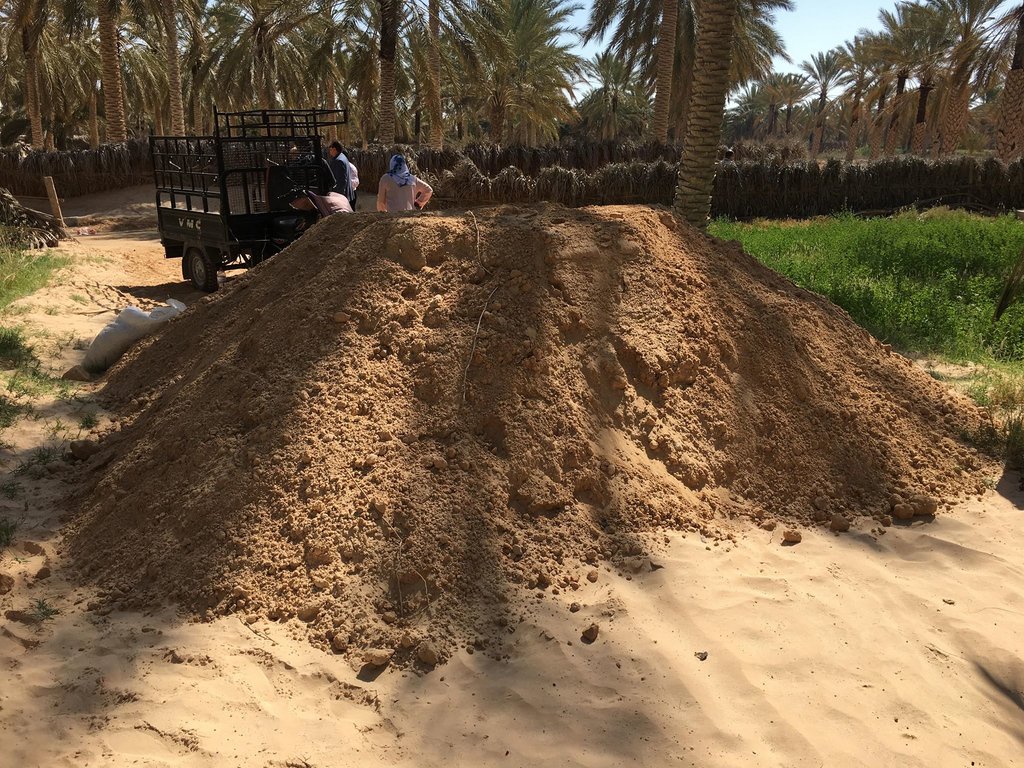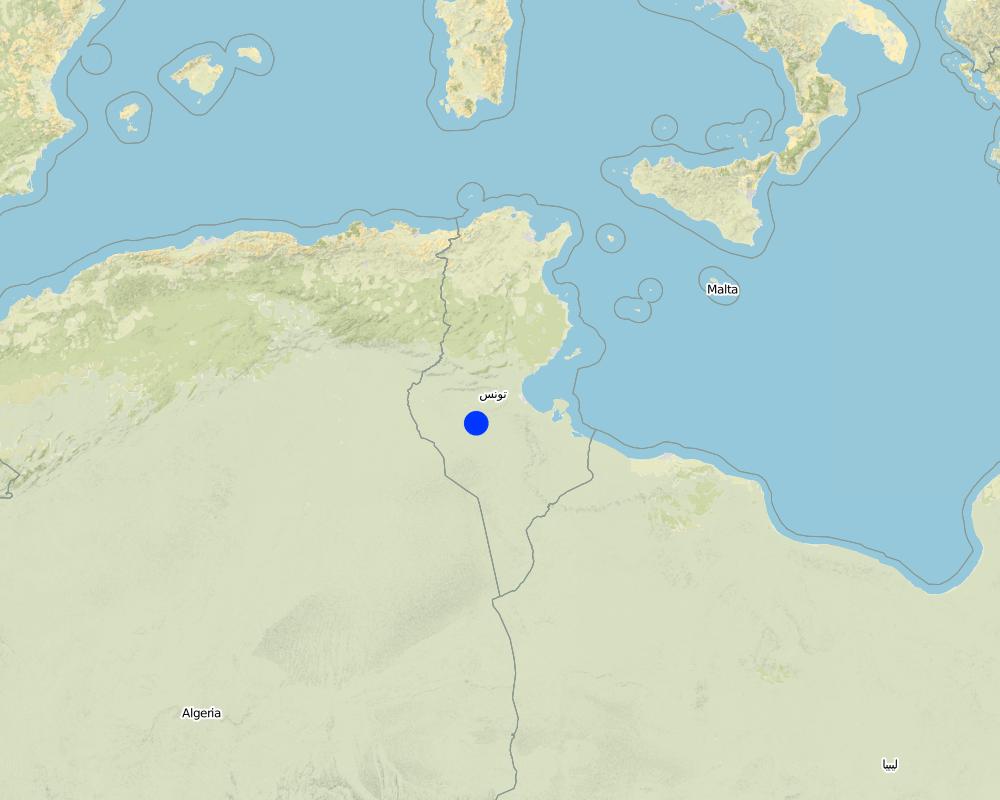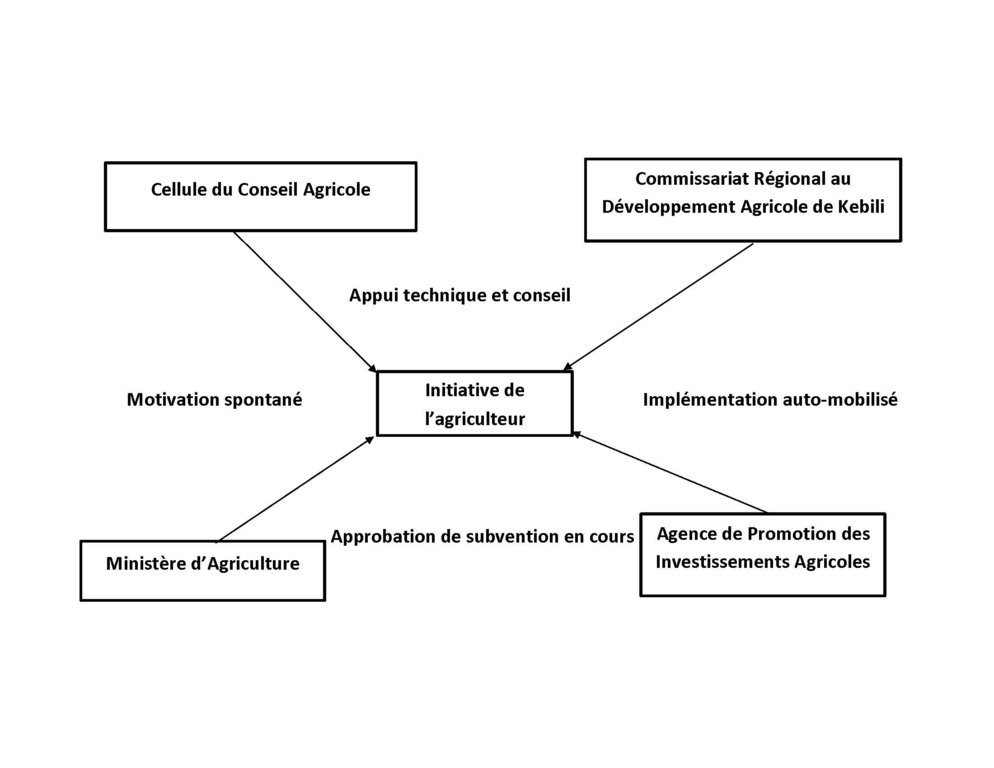Initiative des agriculteurs pour l'application de l'amendement sableux dans les oasis. [Tunisia]
- Creation:
- Update:
- Compiler: Donia Mühlematter
- Editors: nissaf karbout, saadallah jamila
- Reviewer: Donia Mühlematter
Réhabilitation des oasis
approaches_3733 - Tunisia
View sections
Expand all Collapse all1. General information
1.2 Contact details of resource persons and institutions involved in the assessment and documentation of the Approach
Key resource person(s)
SLM specialist:
Karbout Nissaf
Institut des Régions Arides
Medenine
Tunisia
SLM specialist:
Saadallah Jamila
Commissariat Régional au Développement Agricole de Kebili
Kebili
Tunisia
Name of project which facilitated the documentation/ evaluation of the Approach (if relevant)
Decision Support for Mainstreaming and Scaling out Sustainable Land Management (GEF-FAO / DS-SLM)Name of the institution(s) which facilitated the documentation/ evaluation of the Approach (if relevant)
Commissariat Régional au Développement Agricole de Kebili (CRDA) - Tunisia1.3 Conditions regarding the use of data documented through WOCAT
The compiler and key resource person(s) accept the conditions regarding the use of data documented through WOCAT:
Ja
1.4 Reference(s) to Questionnaire(s) on SLM Technologies
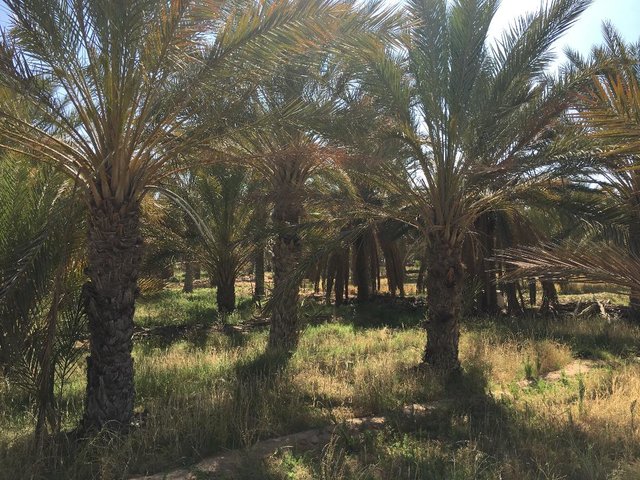
Amendement sableux [Tunisia]
Amendement sableux consiste à améliorer la fertilité de sol pour améliorer la production.
- Compiler: Donia Mühlematter
2. Description of the SLM Approach
2.1 Short description of the Approach
A cause de l’hydromorphie, l’agriculteur recourt à l’utilisation de l’amendement sableux pour proteger les terres agricoles dans les oasis.
2.2 Detailed description of the Approach
Detailed description of the Approach:
A cause de l’hydromorphie, salinité et la dégradation des terres agricoles, les agriculteurs, recourt tout d’abord à la protection des troncs de l’arbre de palmier dattier et conserver sa vigueur.
L’utilisation intensive des terres pour la production de l’étage herbacée conduit à la dégradation des terres et diminution de la fertilité des sols.
Cependant, en fonction de temps les racines des arbres devenus non protégé et se détache à cause des labour et l'intensification du travail de sol.
Comme alternative pour ce problème, l’agriculteur apporte le sable dunaire “Safi” des dunes le plus proche pour protéger les racines de palmier dattier en créant un nouveau substrat pour le palmier.
Cette approche est traditionnelle depuis l'antiquité et ça dépend des moyens financiers des agriculteurs.
L'agriculteur trés agé a affirmé plusieurs fois que le palmier ne peut survivre que par l'apport des sables. Selon lui c'est la seule alternative pour conserver son oasis et il est bien convaincu des bienfaits et de l'efficacité de la technologie d'amendement sableux. Entre aprés 5 à 10 ans, l'agriculture assure l'entretien de la technologie par lun autre apport des sables, de ce qu'il appelle "tamlih" et ceci est aussi nécessaire pour maintenir la bonne état de ses palmiers.
2.3 Photos of the Approach
2.5 Country/ region/ locations where the Approach has been applied
Country:
Tunisia
Region/ State/ Province:
Douz, Kébili
Map
×2.6 Dates of initiation and termination of the Approach
Indicate year of initiation:
1983
If precise year is not known, indicate approximate date when the Approach was initiated:
10-50 years ago
2.7 Type of Approach
- recent local initiative/ innovative
2.8 Main aims/ objectives of the Approach
Réduire les problèmes de dégradation des terres dans les oasis.
Conserver et protection des palmiers dattiers contre l'hydromorphie et la salinité des sols.
2.9 Conditions enabling or hindering implementation of the Technology/ Technologies applied under the Approach
social/ cultural/ religious norms and values
- enabling
Encouragement.
Tout les agriculteurs aimeraient bien appliqué la technologie.
availability/ access to financial resources and services
- hindering
institutional setting
- hindering
collaboration/ coordination of actors
- enabling
Les agriculteurs ont partagé les connaissances.
legal framework (land tenure, land and water use rights)
- hindering
Problème environmentale; contre les lois juridiques.
policies
- hindering
land governance (decision-making, implementation and enforcement)
- hindering
knowledge about SLM, access to technical support
- enabling
Amélioration de la production.
markets (to purchase inputs, sell products) and prices
- enabling
Amélioration de la quantité et la qualité des dattes.
workload, availability of manpower
- enabling
Création d'opportunités d'emploi.
3. Participation and roles of stakeholders involved
3.1 Stakeholders involved in the Approach and their roles
- local land users/ local communities
C'est une initiative auto-mobilisé.
3.2 Involvement of local land users/ local communities in the different phases of the Approach
| Involvement of local land users/ local communities | Specify who was involved and describe activities | |
|---|---|---|
| initiation/ motivation | self-mobilization | Exploitants locaux des terres. |
| planning | self-mobilization | Exploitants locaux des terres. |
| implementation | self-mobilization | Exploitants locaux des terres. |
| monitoring/ evaluation | self-mobilization | Exploitants locaux des terres. |
3.3 Flow chart (if available)
3.4 Decision-making on the selection of SLM Technology/ Technologies
Specify who decided on the selection of the Technology/ Technologies to be implemented:
- land users alone (self-initiative)
Specify on what basis decisions were made:
- personal experience and opinions (undocumented)
4. Technical support, capacity building, and knowledge management
4.1 Capacity building/ training
Was training provided to land users/ other stakeholders?
Nee
4.2 Advisory service
Do land users have access to an advisory service?
Ja
Specify whether advisory service is provided:
- on land users' fields
4.3 Institution strengthening (organizational development)
Have institutions been established or strengthened through the Approach?
- no
4.4 Monitoring and evaluation
Is monitoring and evaluation part of the Approach?
Nee
4.5 Research
Was research part of the Approach?
Nee
5. Financing and external material support
5.1 Annual budget for the SLM component of the Approach
If precise annual budget is not known, indicate range:
- < 2,000
5.2 Financial/ material support provided to land users
Did land users receive financial/ material support for implementing the Technology/ Technologies?
Nee
5.3 Subsidies for specific inputs (including labour)
If labour by land users was a substantial input, was it:
- voluntary
Comments:
La subvention de l'amendement sableux est en cours d'approbation dans la loi en Tunisie.
5.4 Credit
Was credit provided under the Approach for SLM activities?
Nee
5.5 Other incentives or instruments
Were other incentives or instruments used to promote implementation of SLM Technologies?
Nee
6. Impact analysis and concluding statements
6.1 Impacts of the Approach
Did the Approach empower local land users, improve stakeholder participation?
- No
- Yes, little
- Yes, moderately
- Yes, greatly
L'agriculteur est autonome.
Did the Approach enable evidence-based decision-making?
- No
- Yes, little
- Yes, moderately
- Yes, greatly
L'agriculteur est autonome.
Did the Approach help land users to implement and maintain SLM Technologies?
- No
- Yes, little
- Yes, moderately
- Yes, greatly
Did the Approach improve coordination and cost-effective implementation of SLM?
- No
- Yes, little
- Yes, moderately
- Yes, greatly
Did the Approach mobilize/ improve access to financial resources for SLM implementation?
- No
- Yes, little
- Yes, moderately
- Yes, greatly
Pas encore subventionné.
Did the Approach improve knowledge and capacities of land users to implement SLM?
- No
- Yes, little
- Yes, moderately
- Yes, greatly
Did the Approach improve knowledge and capacities of other stakeholders?
- No
- Yes, little
- Yes, moderately
- Yes, greatly
Did the Approach build/ strengthen institutions, collaboration between stakeholders?
- No
- Yes, little
- Yes, moderately
- Yes, greatly
Did the Approach mitigate conflicts?
- No
- Yes, little
- Yes, moderately
- Yes, greatly
Augmentation des conflits à cause de l'augmentation des effets off-site.
Did the Approach encourage young people/ the next generation of land users to engage in SLM?
- No
- Yes, little
- Yes, moderately
- Yes, greatly
Did the Approach improve issues of land tenure/ user rights that hindered implementation of SLM Technologies?
- No
- Yes, little
- Yes, moderately
- Yes, greatly
Did the Approach lead to improved food security/ improved nutrition?
- No
- Yes, little
- Yes, moderately
- Yes, greatly
Did the Approach improve access to markets?
- No
- Yes, little
- Yes, moderately
- Yes, greatly
Did the Approach lead to improved access to water and sanitation?
- No
- Yes, little
- Yes, moderately
- Yes, greatly
Did the Approach lead to more sustainable use/ sources of energy?
- No
- Yes, little
- Yes, moderately
- Yes, greatly
Did the Approach improve the capacity of the land users to adapt to climate changes/ extremes and mitigate climate related disasters?
- No
- Yes, little
- Yes, moderately
- Yes, greatly
Did the Approach lead to employment, income opportunities?
- No
- Yes, little
- Yes, moderately
- Yes, greatly
6.2 Main motivation of land users to implement SLM
- increased production
L'amendement sableux maintient le palmier à ètre plus productive.
- increased profit(ability), improved cost-benefit-ratio
Les dépences peuvent ètre couvertes déjà dés la première année de la mise en oeuvre.
- reduced land degradation
6.3 Sustainability of Approach activities
Can the land users sustain what has been implemented through the Approach (without external support)?
- yes
If yes, describe how:
L'agriculteur est bien conscient de l'utilité et l'efficacité de l'amendement sableux.
6.4 Strengths/ advantages of the Approach
| Strengths/ advantages/ opportunities in the land user’s view |
|---|
| Amélioration de la production de palmier dattier et les cultures herbacés. |
| Amélioration des caractéristiques physico-chimiques des sols. |
| Strengths/ advantages/ opportunities in the compiler’s or other key resource person’s view |
|---|
| Initiative qui encourage les autres agriculteurs à suivre l'expérience de l'amendement sableux. |
| Confirmation de l'utilité de la technologie par les études de recherche. |
| Les administrations agricoles demandent la comité scientifique d'avoir plus des résultats et des épreuves scientifiques bien claires. |
| Modèle à suivre. |
6.5 Weaknesses/ disadvantages of the Approach and ways of overcoming them
| Weaknesses/ disadvantages/ risks in the land user’s view | How can they be overcome? |
|---|---|
| Aggravation des conflits causé par l'effet off-site de la technologie. | Fournir des subventions pour égaliser et diminuer la disparitée économique entre les agriculteurs. |
| Source d'apport du sable non controlé. | Création des sites et des sources bien réglé et controlé par l'état. |
| Pas d'institualisation et apport sableux anarchique. | Prendre permission des directions responsables jusqu'à la réglementation de ces activités. |
| Weaknesses/ disadvantages/ risks in the compiler’s or other key resource person’s view | How can they be overcome? |
|---|---|
| Entraver la conservation de patrimoine naturelle (destruction des géomorphosites). | Régler et controler les activités des apports sableux. |
7. References and links
7.1 Methods/ sources of information
- field visits, field surveys
2 agriculteurs.
- interviews with land users
2 agriculteurs.
- interviews with SLM specialists/ experts
8 spécialistes de CRDA de Kébili.
7.3 Links to relevant information which is available online
Title/ description:
La filière des dattes communes dans les oasis de Gabès dans le contexte des aléas climatiques et économiques: fonctionnement, atouts et contraintes
URL:
https://www.memoireonline.com/02/12/5304/m_La-filiere-des-dattes-communes-dans-les-oasis-de-Gabes-dans-le-contexte-des-aleas-climatiques-et20.html
Title/ description:
Dans les oasis de Nafzoua
URL:
https://www.rcp-sirma.org/content/download/4236/31621/version/1/file/Exposition+Nefzaoua.pdf
Title/ description:
De l’identification des contraintes environnemental es à l’évaluation des performances agronomiques dans un système irrig ué collectif. Cas de l’oasis de Fatnassa (Nefzaoua, sud tunisien)
URL:
https://tel.archives-ouvertes.fr/tel-00473373/document
Links and modules
Expand all Collapse allLinks

Amendement sableux [Tunisia]
Amendement sableux consiste à améliorer la fertilité de sol pour améliorer la production.
- Compiler: Donia Mühlematter
Modules
No modules


